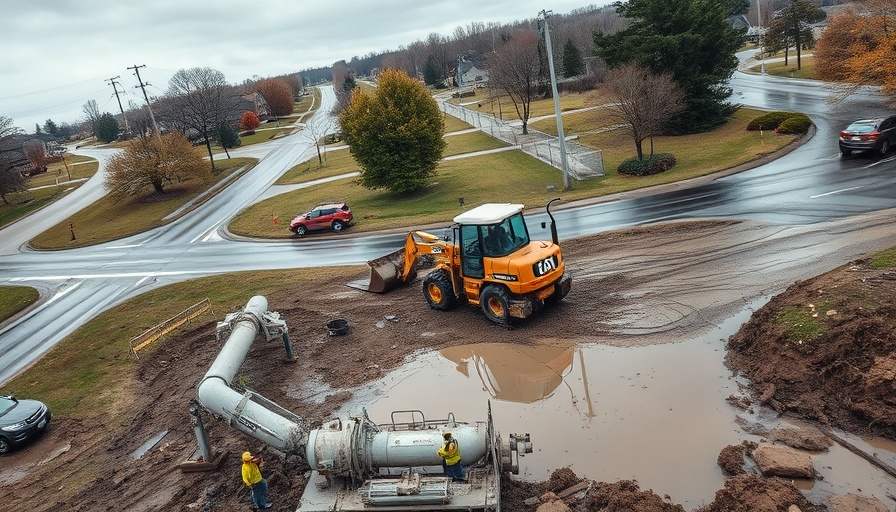
Understanding the Impact of Utility Incidents in Urban Areas
Utility incidents are a serious concern, especially in densely populated urban settings like Houston. When a water crew accidentally strikes a gas line on Southridge Street, the ramifications extend beyond just property damage. Such accidents can lead to public safety issues, potential evacuations, and economic repercussions for local businesses. The recent incident highlights the importance of proper training and adherence to safety protocols among utility workers.
What Prompted the Incident?
A Houston Public Works crew was engaged in maintenance work on a water line when they hit a gas line near the South Loop. This intersection is often bustling with activity, increasing the stakes for a misjudgment. Houston Fire Department officials confirmed that the damage occurred shortly after 3:30 p.m. Fortunately, emergency services were dispatched promptly, which minimized the risks associated with such hazards.
Potential Consequences of Gas Line Strikes
When a gas line is struck, there are several immediate dangers posed to the surrounding area. Gas leaks can lead to explosions, environmental hazards, and prolonged service interruptions for residents and businesses. In this case, the swift action of emergency responders prevented any catastrophic outcomes. However, public awareness about the dangers of gas line strikes remains crucial.
Historical Context of Utility Strikes
Utility strikes are not an uncommon occurrence in large cities. According to reports, the number of incidents has been on the rise due to increased development and aging infrastructure. Many city officials advocate for better coordination among utility companies and city departments to mitigate these risks. This recent event serves as a reminder that vigilance and communication are necessary to safeguard urban residents.
What Should We Learn From This Incident?
Residents and city officials alike need to recognize the importance of utility safety procedures. Utility workers must receive adequate training in detecting and identifying underground lines. Moreover, adopting new technologies can help in accurately mapping utility lines, thus reducing the chance of future accidents. This event validly calls for stronger regulations and routine audits in the city's utility management bureaucracy.
The Broader Picture: Urban Infrastructure Challenges
As cities grow, the infrastructure must keep up. In Houston, the challenge includes aging pipes, increased water and gas consumption, and an increasing number of utility excavation projects. Addressing these issues requires not only funding but a holistic approach that incorporates modern technology for better monitoring and maintenance practices.
Future Predictions: Urban Disaster Preparedness
Looking into the future, urban centers must prioritize disaster preparedness. The Houston Fire Department and Public Works need to enhance their training programs and develop more robust emergency response strategies. Collaborative efforts with federal and state agencies can also amplify their impact, ensuring residents' safety is always maintained.
Conclusion: Making Community Safety a Priority
This recent utility incident underscores a crucial learning point for Houston's infrastructure management. While there were no immediate injuries, the response from local authorities effectively demonstrated the importance of preparedness and rapid action in emergency situations. Residents are encouraged to remain aware of their surroundings and report any suspicious activity related to utility works. Further, cleaning up our urban infrastructure remains a priority, both for safety and for continued development in the area.
Staying informed and getting involved in community safety initiatives is essential. Consider contacting your local representatives to express the need for improved infrastructure and utility safety measures. Together, we can contribute to a safer Houston.
 Add Element
Add Element  Add Row
Add Row 



Write A Comment